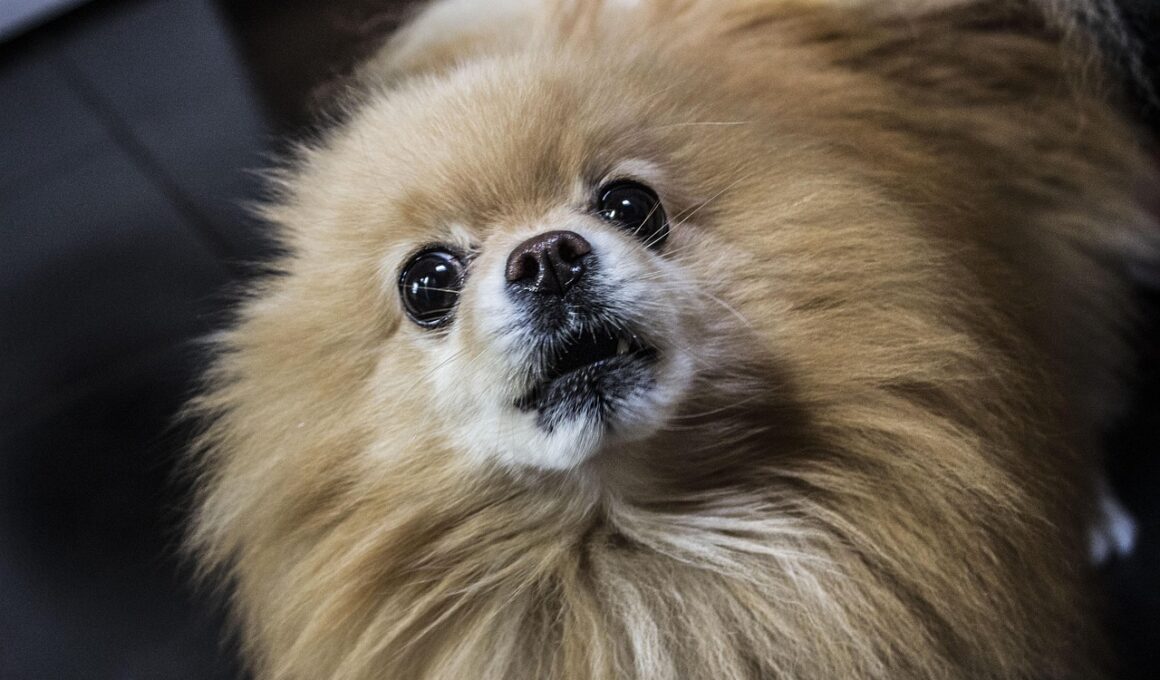Role of Consistency and Routine in Aggression Training
Consistency and routine play pivotal roles in dog training, especially when addressing aggression issues. Owners must understand that dogs thrive when they know what to expect from their environment and their handlers. When a training routine is established, it reduces anxiety in dogs, ultimately leading to a calmer, more obedient pet. The foundation of aggression control hinges on these principles, focusing on predictable responses and consistent commands. Regularly scheduled training sessions provide a framework that allows dogs to understand the boundaries set for them. Furthermore, when owners demonstrate consistent human behaviors, it fosters trust and promotes better communication. An inconsistent approach may confuse the dog, leading to unpredictable behavior and increased aggression. Therefore, maintaining a discipline regimen is key to reinforcing positive behaviors. Each session should ideally follow a structured pattern that includes commands, rewards, and corrections. In doing so, dogs learn to associate specific actions with outcomes more effectively. Owners should implement methods that involve positive reinforcement, which encourages desired behaviors while neglecting undesirable actions. This creates a positive training experience that benefits both the dog and its owner.
Ongoing support from family members is critical for success. Every person in the household should uphold the same training techniques; this aligns expectations and guarantees that the dog receives a unified message. Diverging opinions on commands or methods confuse the dog, which could increase aggressive tendencies. Thus, it is recommended that all family members learn and practice the same approach diligently. Using specific commands consistently ensures that the dog can easily associate them with the required response. The importance of verbal cues cannot be overstated; using a consistent tone provided through reinforcement reinforces learning. Dogs also respond well to visual cues, such as hand signals, which can contribute to a healthier training environment. Routines should involve regular assessment of the dog’s progress, helping to identify possible triggers of aggression more effectively. Moreover, modifying the routine to address these triggers can be beneficial. Ensuring that a routine involves elements that challenge the dog mentally will also keep them engaged. This helps to mitigate anxiety, preventing aggression from arising in the first place. Positive routines are essential for effective aggression control during training.
Importance of Setting Expectations
Establishing clear expectations regarding behavior is a fundamental aspect of training for aggression control. Dogs need to understand what is expected of them through consistent routines. This clarity ensures that they make reasonable choices based on what they learn during training. Training should encompass more than merely correcting undesirable behavior; it should also proactively teach dogs what they need to do instead. For instance, when a dog reacts aggressively, redirecting that behavior into a compliant action is vital. Regularly practicing command sequences provides dogs with a foundation they can build on and ensures that desirable behaviors are deeply ingrained. As aggression manifests through various behavioral patterns, it’s crucial to take a holistic view of the dog’s training. Analyzing the context and assessing both triggers and responses during routine sessions allows owners to adjust their training strategies. Creating an environment where the dog feels empowered, rather than fearful of reprimands, encourages open communication. It also fosters a strong bond of trust between the dog and the owner. Positive reinforcement coupled with consistent routines will undoubtedly enhance learning experiences, making aggression control far more attainable.
The role of timing should also be carefully considered in the context of routine. Immediate reinforcement of desired behaviors reinforces the link between the action and the reward, promoting faster learning. However, when owners employ inconsistent timing in their responses, it can lead to enhanced confusion. Dogs are continuously learning about behaviors based on the outcomes of previous actions. Frequent practice over time solidifies understanding, ensuring that corrections and praises occur in a timely manner. A well-structured routine that incorporates frequent training sessions consistently produces long-lasting results. Although dogs thrive on repetition, it’s equally important to introduce variety. This keeps the dog engaged and prevents boredom, which can lead to disruptions in routine. Repeating the same commands in different settings can provide valuable real-world scenarios that support aggression control. Owners should also schedule playtime or socialization opportunities, allowing dogs to practice their skills in a controlled manner. Throughout all training sessions, the importance of patience cannot be overemphasized. Consistency and routine will only prove effective when paired with a gradual approach that allows the dog to develop naturally without causing undue stress.
Reinforcement Schedules and Their Impact
One critical section of aggression training linked with routine involves reinforcement schedules. Establishing a predictable schedule allows dogs to anticipate rewards, which can strengthen their response to training. Various reinforcement methods can be used, including fixed or variable schedules, which directly impact learning rates. Fixed reinforcement schedules provide rewards at specific intervals, while variable schedules yield reinforcement inconsistently. Dog behavior may change in response to these differing schedules, as unpredictability can maintain motivation. Owners should consider what works best for their dog; some may respond better to immediate, consistent rewards, while others might thrive under variable rewards. Positive reinforcement encourages the desired behaviors that ultimately reduce aggression. Rewarding the dog when they exhibit calm behavior reinforces this trait and contributes to a routine of expected actions. Owners can also integrate diverse rewards, such as toys and treats, to keep training fresh and engaging. Incorporating environmental rewards, like allowing playtime or outdoor trips, reinforces positive behavior aligned with routine. Adapting the reinforcement schedule to match the dog’s learning for aggression control ensures effective communication. Thus, recognizing the unique needs of each dog can elevate training outcomes significantly.
In conclusion, the significance of consistency and routine cannot be overstressed when it comes to dog training, particularly in managing aggressive behaviors. Owners must adopt a structured, regular approach to ensure their dogs receive clear messages about boundaries, allowing them to learn and adapt. The synergy of consistency and routine enables dogs to thrive, reducing the likelihood of aggressive outbursts. With unwavering dedication, families can work cohesively, refining training to suit the unique temperament of their dog. By emphasizing the importance of verbal and visual cues, as well as fostering trust, owners set the groundwork for successful aggression management. Timing is just as crucial; positive responses must be immediate to reinforce desired behaviors effectively. Engaging the dog through play, varying training methods, and employing different reinforcements contributes to a more enriching learning experience. Behavior challenges can arise in various settings and contexts; therefore, remaining adaptable while maintaining a routine strengthens the bond between handler and dog. Through diligence, patience, and the right techniques, aggression control can become a realizable goal in the journey of dog training.
Final Thoughts on Training Routines
Ultimately, understanding the intricate dynamics of training routines provides insight into aggression control. Dogs are inherently creatures of habit, benefiting immensely from a predictable framework that allows learning and correction to occur seamlessly. For owners, this translates to a consistent commitment to training efforts while adapting to the unique characteristics and temperament of their pet. Every training session should integrate essential elements such as commands, praise, and corrections, ensuring that the dog not only learns but thrives in a structured environment. A well-thought-out routine can serve as a preventive measure, reducing situations that provoke aggression. Additionally, encouraging socialization through well-planned interactions can enhance emotional stability in dogs, further mitigating aggressive responses. Clear and consistent communication remains crucial, providing reassurance to the dog and fostering a sense of security. Over time, these elements accumulate into a comprehensive training plan that promotes behavioral change. The culmination of consistency, routine, training techniques, and reinforcement creates an environment where aggression control becomes achievable. In turn, this enhances the overall quality of life for the dog and helps owners forge a deeper connection with their furry companions.
Incorporating all of these aspects plays a fundamental role in the journey of dog training, revolving around consistency and routine. These guideposts not only aid in correcting behavior but establish boundaries that contribute to a harmonious living environment. Therefore, recognizing the value of these elements should become a priority for all dog owners committed to a well-trained and happy canine companion. By implementing a structured approach to aggression training, individuals chart a course toward improved behavior. As with all learning processes, the commitment to consistency and routine may initially take time and patience, but the rewards will undoubtedly flourish as dogs gradually adapt to their environment and expectations.


